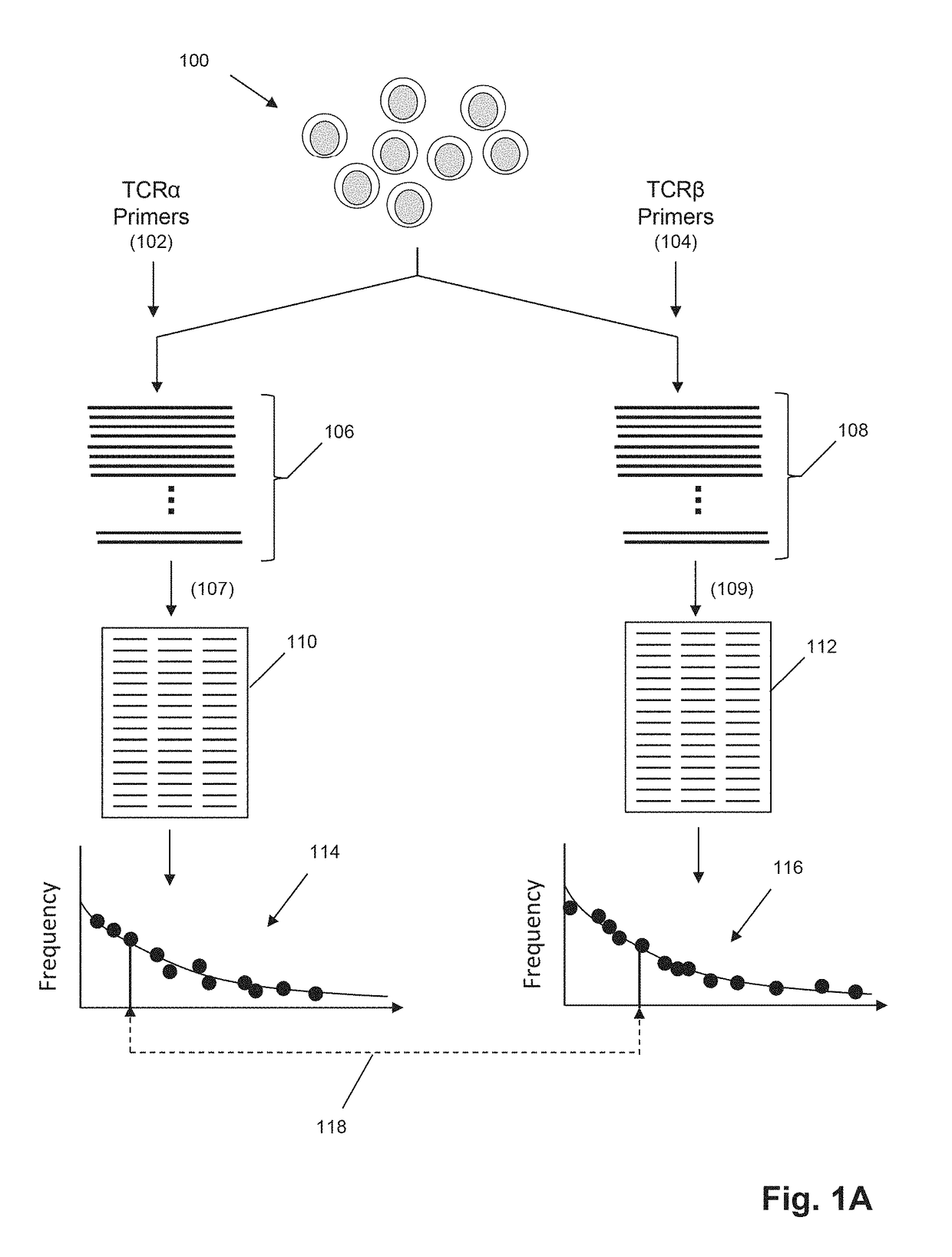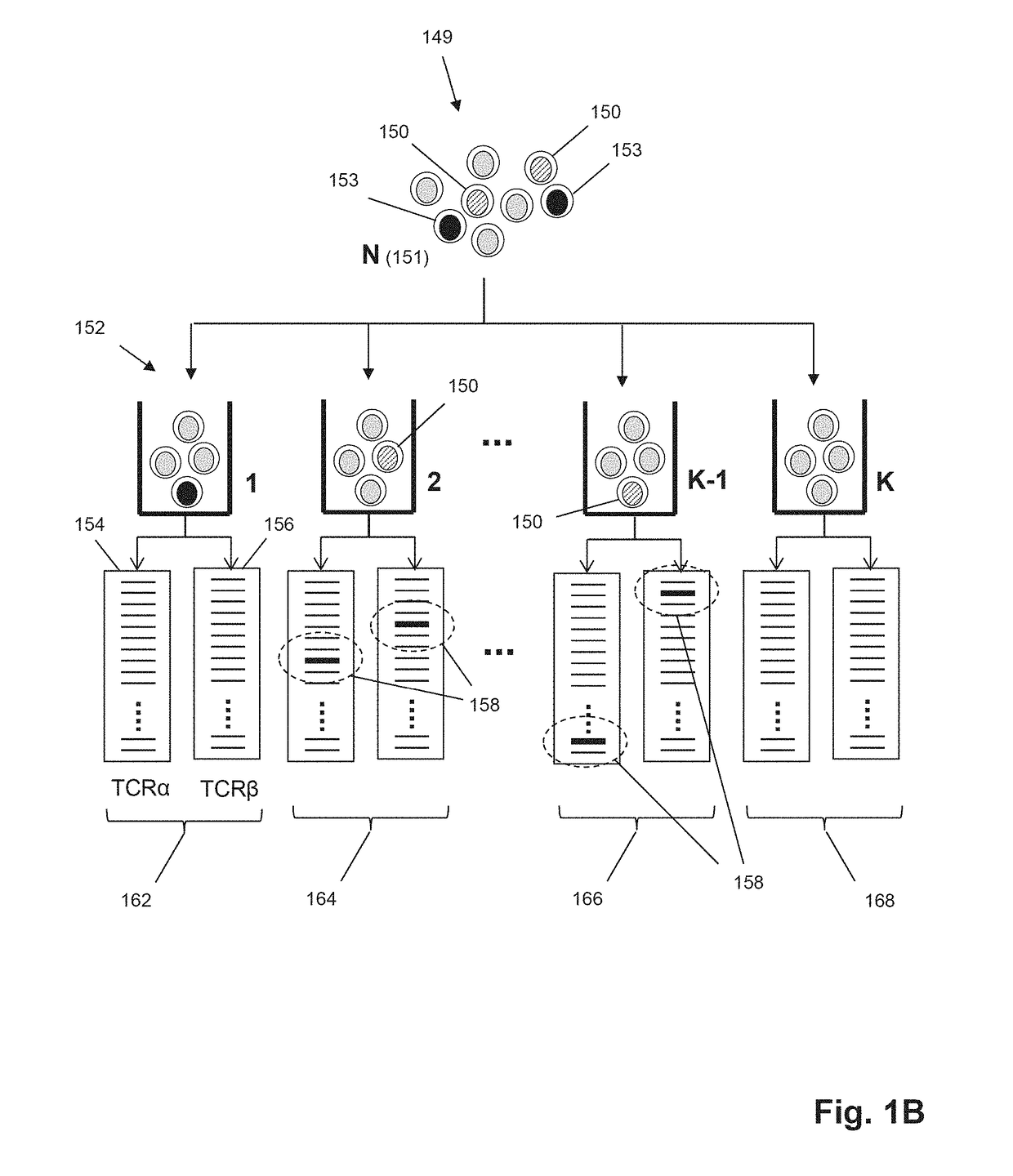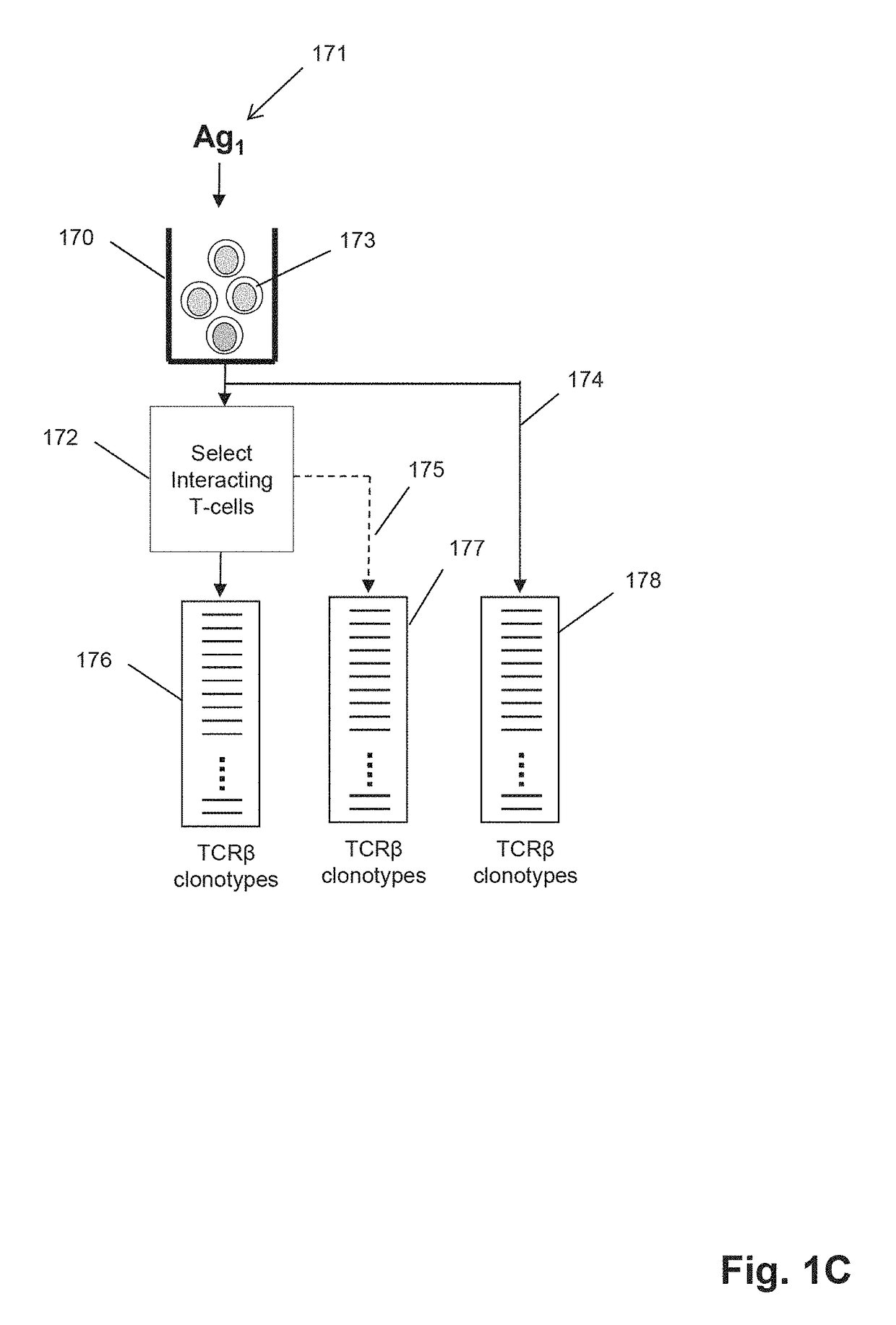Determining antigen-specific t-cells
a technology of t-cells and antigens, applied in the field of determining antigen-specific t cells, can solve the problems of inability to obtain potentially useful information from correctly paired tcr and tcr chains, difficult and expensive current techniques for identifying and tracking antigen-specific t cells, especially on a large scal
- Summary
- Abstract
- Description
- Claims
- Application Information
AI Technical Summary
Problems solved by technology
Method used
Image
Examples
examples
[0105]In this example steps common to some embodiments, such as the embodiment of FIG. 1C, are described for particular applications, including but not limited to, exposing a tissue sample comprising T cells to antigen, activating T cell in a tissue sample by antigen, obtaining recombined nucleic acids from T cells of a tissue sample, isolating (or recovering, or sorting, or separating) activated T cells, sequencing recombined nucleic acids, forming clonotypes, and determining clonotypes of antigen-specific T cells.
[0106]Tissue Samples. Characterized PBMCs were purchased from Cellular Technology Limited. Cells were thawed, washed and either lysed with RLT plus buffer (Qiagen) for nucleic acid purification or cultured overnight in the presence of peptides (see below) to identify antigen-specific T cells.
[0107]Antigen-Specific T Cell Assays, Flow Cytometry and Cell Sorting. Antigen-specific cells were identified using a variety of assays: pentamer binding, cell surface marker upregula...
PUM
| Property | Measurement | Unit |
|---|---|---|
| volume | aaaaa | aaaaa |
| volume | aaaaa | aaaaa |
| size | aaaaa | aaaaa |
Abstract
Description
Claims
Application Information
 Login to View More
Login to View More - R&D
- Intellectual Property
- Life Sciences
- Materials
- Tech Scout
- Unparalleled Data Quality
- Higher Quality Content
- 60% Fewer Hallucinations
Browse by: Latest US Patents, China's latest patents, Technical Efficacy Thesaurus, Application Domain, Technology Topic, Popular Technical Reports.
© 2025 PatSnap. All rights reserved.Legal|Privacy policy|Modern Slavery Act Transparency Statement|Sitemap|About US| Contact US: help@patsnap.com



